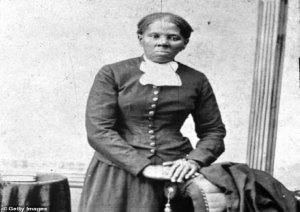Nearly 100 years after the worst racially motivated massacre in Tulsa, Oklahoma, the search for victims, believed to have been buried in graves, has begun.
The search will afford residents of Tulsa and the survivors of the massacre an insight into a crime scene that was never fully investigated, according to reports.
The massacre, christened as the Tulsa riot, took place from May 31 to June 1, 1921. A white mob invaded and attacked residents of black residents living in Greenwood.
Greenwood, at that time, was the most thriving African-American neighborhood in the United States. Nicknamed the ‘Black Wall Street, Greenwood was home to highly successful and profitable black-owned businesses.
The mob charred businesses, homes, and churches and after the smoke cleared, more than 35 blocks were destroyed. It is believed that at least 100-300 hundred people, mostly blacks, were killed while a thousand more were left homeless in the two days of fighting.

“We’ve had an intense study for over a year, just looking at death figures,” Historian Scott Ellsworth, an aide to the Oklahoma Commission set to study the 1921 riot, said.
He added, “I think we are now convinced this is the largest single incident of racial violence in American history.”
The Commission spoke to over 60 living black survivors during its work and investigated reports of airplanes bombing blacks and of bodies being tossed into the Arkansas River.
The search
Tulsa’s Mayor G.T. Bynum announced Monday he was opening up an investigation into the existence of mass graves from the massacre believed to be the heinous racially orchestrated purging in the history of the U.S.
“We can’t change the past, but we can control what we do today. In 2019, we will do right by our neighbors. The scanning that starts today is the result of decades of research by historians to narrow the search to a handful of primary locations.
“But this process has shown us that many families passed down stories about the 1921 Tulsa Race Massacre and possible grave locations that were never properly recorded,” Bynum said via Facebook.
For him, the “only way to move forward in our work to bring about reconciliation in Tulsa is by seeking the truth honestly.” “As we open this investigation 98 years later, there are both unknowns and truths to uncover,” he said in a statement last year.
According to Bynum, the need to get an insight into the scenes of the heinous massacre “is a matter of basic human decency.”
Bynum, before winning the mayoral seat in 2016, said he had interviewed people who had investigated the possibility of mass graves in 2012.
They found that there were two cemeteries and a city park where victims from the massacre might have been dumped.
The search will look at Newblock Park, Booker T. Washington Cemetery and Oaklawn Cemetery—it is believed that they are “the greatest potential for mass graves within the Tulsa city limits.”

Destruction of the Black Wall Street
Black Wall Street, at that time, had what other black American neighborhoods did not have – affluence and a hub to highly successful and profitable black-owned businesses.
The riot was spurred after a 19-year old black shoeshiner by the name Dick Rowland was accused of raping a 17-year old white female elevator operator called Sarah Page.
On May 30, 1921, Rowland entered the Drexel building, at 319 South Main Street to use the blacks’ only restroom which was on the top floor. The building had only one elevator which was being operated by Page at that time.
According to reports, Rowland accidentally slipped and fell on Page causing her to scream out of panic. A white clerk who witnessed the incident called the police who later on arrested Rowland and charged him with assault even though Page refused to press any charges.
The incident was reported by a white-owned local newspaper calling for his lynching. Rowland was processed and taken to court on May 31, 1921.
However, tensions between the white mob who went to the courthouse to lynch Rowland and the black residents who were also around to ensure his safety escalated into a 24-hour-long armed confrontation.










